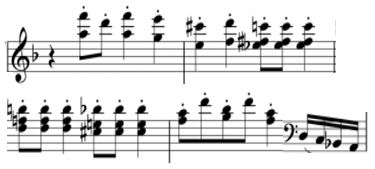Pjotr Iljitsch Tschaikowski, *1840, †1893, was a Russian composer, who wrote amond others the three most famous ballets of the history of music: Swan Lake (Schwanensee, 1877), The sleeping beauty (Dornröschen, 1890) and The Nutcracker (Nussknacker, 1892) The Nutcracker The Dance of the Sugar Plum Fairy (Tanz der Zuckerfee) is a dance from Act 2 of the 1892 ballet The Nutcracker. It is danced by the principal female dancer. Choreographer Marius Petipa wanted the Sugar Plum Fairy's music to sound like "drops of water shooting from a fountain". Tchaikovsky found the ideal instrument to do this job in Paris in 1891. It was then that he came across the recently invented celesta. This instrument looked like a piano and sounded like bells. Tchaikovsky introduced the celesta to Russian music lovers on 19 March 1892 when the Nutcracker Suite was performed for the Russian Musical Society in St. Petersburg. The instrument is forever identified with the Dance of the Sugar Plum Fairy, which one of the ballet's best known musical numbers.
The Waltz of the Flowers is a piece of orchestral music from the second act of The Nutcracker and also the last number in his Nutcracker Suite.
March of the Toy Soldiers
Attention - possibilitiy of a confusion / Achtung Verwechslungsmöglichkeit: Die Parade of the Tin Soldiers (Die Parade der Zinnsoldaten), also known as The Parade of the Wooden Soldiers is a piece of music on Leon Lessel. ATTENTION: Marche des petits soldats de plomb, op.14,6 von Pierné, Gabriel Henri Constant, *1863, †1937: pour flûte, hautbois, clarinette, basson et cor en fa (piano et tambour ad lib)
|

